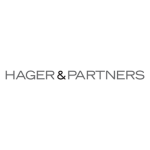It grants a 50% exemption from corporate income tax (i.e. IRES) and regional tax on productive activities (i.e. IRAP). It is characterised by a five-year lock-in period. The election is renewable, and its tax benefits include:
Income deriving from the licence to third parties of intangibles;
Direct use of the intangible; or
Exemption of the gain deriving from the disposal of an IP, provided that at least 90% of the price received is re-invested within two years in new R&D activities. In cases where the intangible is exploited by the same company that performs the R&D activities, it has to identify an amount corresponding to the economic contribution that the intangible adds to the aggregate income by activating a formal negotiation with the Central Revenue (via the so-called 'international standard ruling procedure').
Recent amendments for direct use cases
Law Decree No. 34 (Growth Decree), which was published in the Official Gazette on April 30 2019, notes that companies which opt for the patent box regime are allowed (in cases of direct use) to determine by themselves and declare the eligible income, avoiding the preventive ruling procedure with the competent tax office.
Furthermore, those taxpayers that (i) decide to benefit from this simplification, (ii) prepare dedicated supporting documentation according to the specific regulations that will be issued by Central Revenue by the end of July 2019, and (iii) give communication of its possession to Revenue before the beginning of a tax audit on that fiscal year, will benefit from a penalty protection in case officers challenge the calculation of the patent box incentive.
The patent box benefit shall be split in three equal instalments. Worth noting is that this simplification can be exploited both by taxpayers that have already started the ruling procedure with the competent tax office and by those which made the application for previous fiscal years (up to 2018), but have not been convened by the officers yet.
Takeaways
The recently enforced provisions have a clear goal to boost support for companies engaged in R&D activities which have historically suffered from delays in negotiations due to the technicalities required for IP analysis, and the limited resources of the tax offices for valuations.
Even if relevant indications will come only from the Central Revenue guidelines at the end of July, strategic and operational implications have to be evaluated today.
Taxpayers who have not applied for the regime and those who have not completed the ruling procedure with the Italian tax authority have to decide between the old and new automatic patent box regime. The two possibilities have different implications and the choice should be evaluated on a case-by-case basis.
Old patent box
The old patent box procedure (i.e. where companies decide to identify the amount of the tax relief by means of a preventive ruling), grants taxpayers the possibility of benefitting from a tax reduction previously agreed with the tax office, with limitations on potential litigation with the Central Revenue (practically confined to the verification of the correct implementation of the calculation mechanisms agreed during the ruling phase).
Going along the path of the preventive ruling would also imply making the downward adjustment, for the specific year it is related to, entirely in the pertaining tax return (instead of splitting it equally across three fiscal years).
New automatic patent box
In cases where the company chooses an automatic application of the patent box regime (i.e. self-liquidation of the relief), it would benefit from simplification in procedure (no ruling required) and timing.
Among others, the new procedure would be a crucial resource in terms of economic, as well as financial planning, especially in those situations where the IP contribution to the business has been remarkable in previous fiscal years and the relating patent box relief could highly impact on the current and following year. It is an option that could be suggested to those companies who can clearly identify the intangibles used and the attributable income.
Final remarks
Simplification measures for the patent box regime relies on a cooperative relationship between Central Revenue and the taxpayer. The latter is requested to adopt a proactive attitude when preparing advance, supporting documentation to satisfy all formal and substance requirements.
Considering the vast number of companies that may be attracted by patent box relief and simplified access, the way the tax offices will conduct tax inspections on this topic will be pivotal to evaluate an appeal in the medium to long-term.
Postponing checks during a tax audit (with limited time given by the law) may generate additional litigation.
Accordingly, supporting documentation will be unavoidable and will have to become part of the ordinary compliance work to manage a tax risk that may have a big impact on the financial and operational sides.













